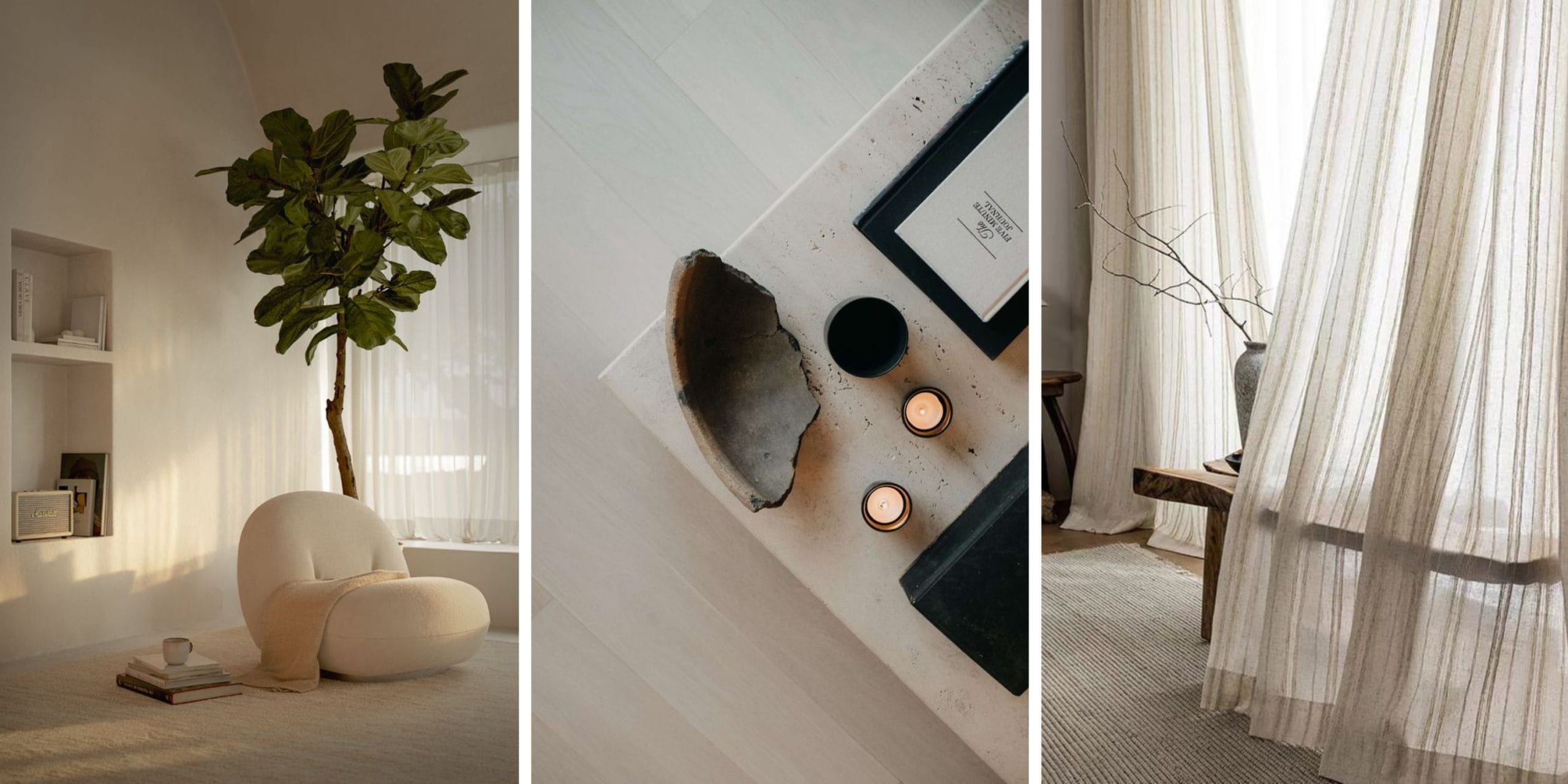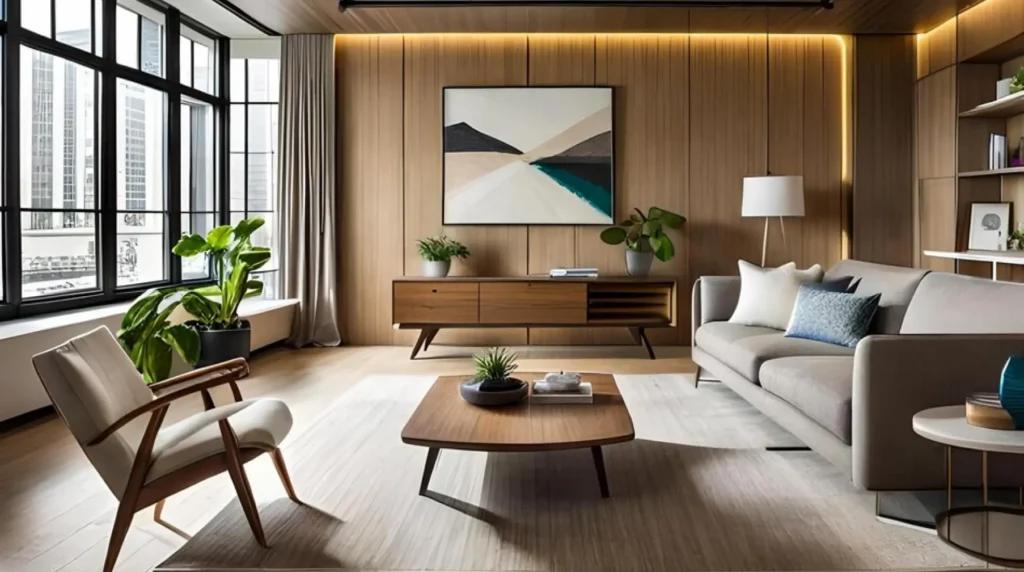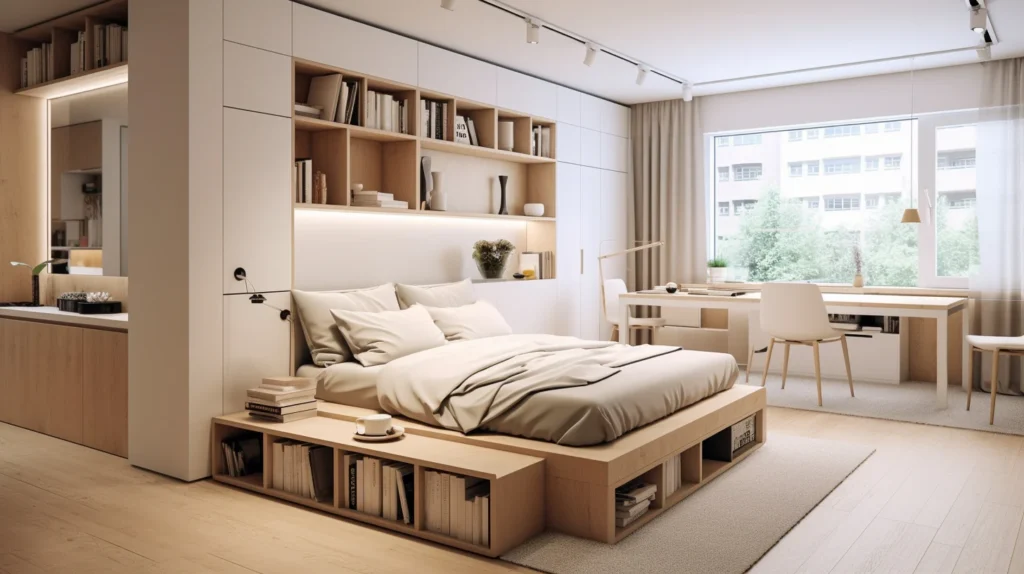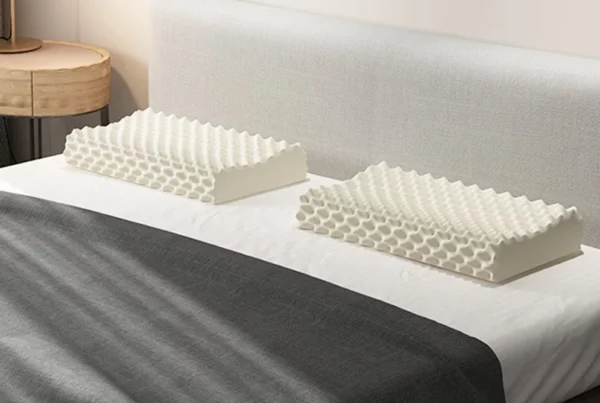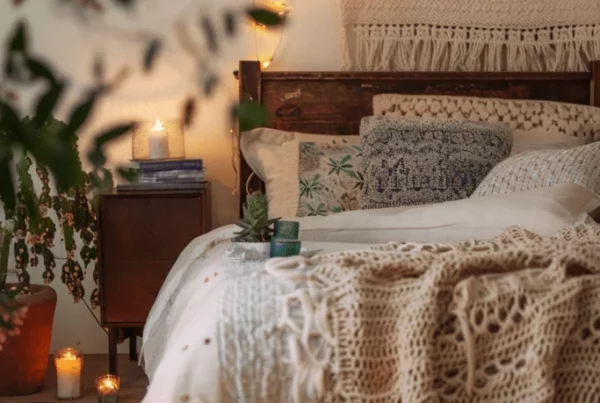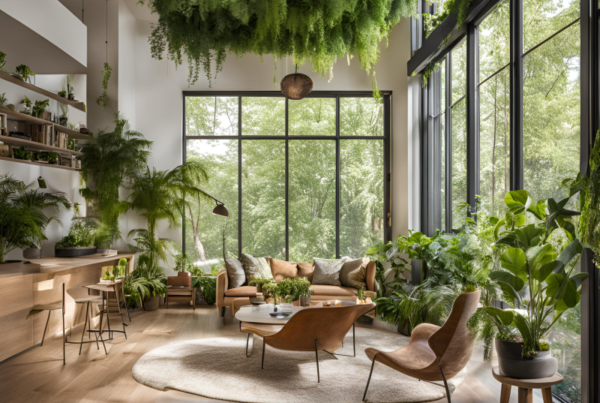In the context of modern interior design, creating spaces that reflect personal identity while also being functional is essential. This article explores how to curate personalized decor that not only enhances your living environment but also allows you to express your unique style. By focusing on the importance of personalization, you will discover practical strategies for selecting and arranging decor that resonates with your life experiences and preferences.
As we delve into the concepts of emotional connection, creativity, and sustainable choices in decor, you’ll gain valuable insights to transform your home into a sanctuary that truly reflects who you are. Whether you’re starting from scratch or looking to refresh your existing space, this guide will provide actionable advice to help you achieve a harmonious and inviting environment.
Table of Contents
Embrace Biophilic Design for Natural Serenity
In our increasingly urbanized world, the need for a natural sanctuary within our homes has never been more vital. Biophilic design is a transformative approach that integrates natural elements into interior spaces, fostering a deeper connection with nature. This design philosophy draws inspiration from our innate affinity for the natural environment, proving essential for achieving tranquility and well-being within your home. Embracing biophilic design can not only enhance the aesthetics of your space but also promote a robust mental and emotional state.
Understanding Biophilic Design
At its core, biophilic design revolves around creating spaces that reflect and incorporate nature. It emphasizes the following principles:
- Natural Light: Maximizing the use of natural light through windows, skylights, and open spaces can significantly elevate mood and productivity.
- Indoor Plants: Introducing greenery into your space with houseplants not only purifies the air but also instills a sense of well-being.
- Natural Materials: Utilizing wood, stone, and other organic materials can evoke warmth and comfort, making environments feel more inviting.
- Views of Nature: Designing spaces with windows that frame beautiful views can remind us of nature’s beauty and provide a sense of peace.
The Benefits of Biophilic Design
Embracing biophilic principles can yield numerous benefits that transcend mere aesthetics:
- Stress Reduction: Studies have shown that exposure to natural elements can lower stress levels, reduce anxiety, and promote relaxation. Biophilic design encourages a tranquil atmosphere, which helps foster a sense of calm.
- Improved Air Quality: Incorporating plants into your design contributes to better air quality by filtering toxins and releasing oxygen, creating a healthier living environment.
- Enhanced Focus and Creativity: A workspace infused with natural light and greenery can enhance cognitive function, boosting focus and fostering creativity.
Practical Ways to Incorporate Biophilic Design in Your Home
Transforming your home into a nature-inspired sanctuary is more achievable than you might think. Here are several practical strategies:
- Add a Vertical Garden: If space is limited, consider creating a vertical garden or using wall-mounted planters to bring greenery into your environment.
- Choose Natural Textures: Select furnishings and decor that feature natural textures such as wood grain, stone finishes, and woven fabrics. This will create a tactile connection to nature.
- Integrate Water Features: The soothing sound of flowing water can enhance your home’s serenity. Consider a small indoor fountain or a fish tank to bring an element of tranquility.
- Utilize Earthy Colors: Choose a color palette inspired by nature, incorporating earth tones such as greens, browns, and soft blues to create a peaceful atmosphere.
Inspiration from Nature
When looking for inspiration to embrace biophilic design, consider venturing outdoors. Nature offers a vast array of design ideas, from the way light filters through trees to the calming influence of a flowing river. For expert insights and inspiration, explore the NAIOP’s research on biophilic design, which delves into innovative approaches to connect built environments with natural ecosystems.
Incorporating biophilic design is not just an interior trend; it’s a movement toward creating more sustainable, healthful living spaces that cater to our natural needs. By weaving nature into our interiors, we create sanctuaries of calm where we can flourish.
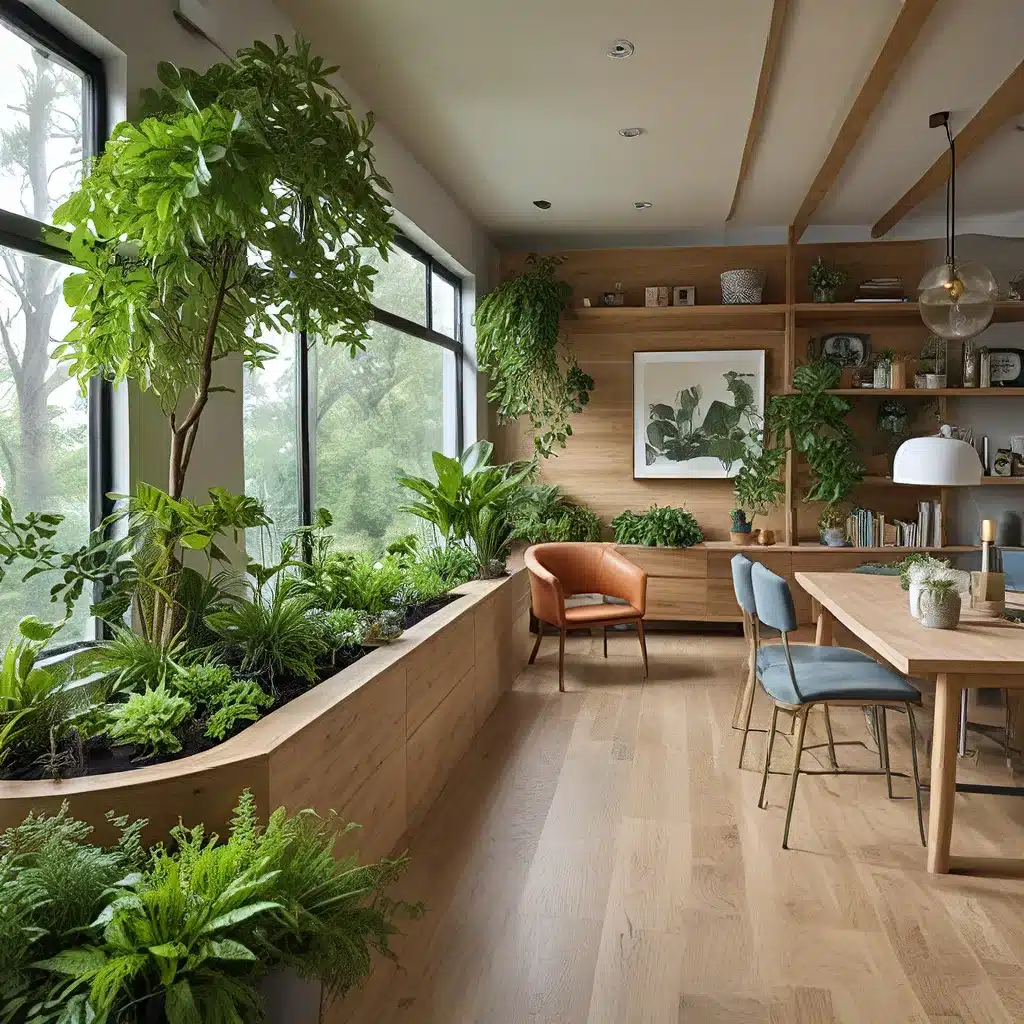
This article segment focuses exclusively on the theme of **biophilic design**, providing a comprehensive exploration of the topic while remaining distinct from other sections. The use of subheadings and bullet points enhances readability and retains SEO optimization.
Maximize Space with Functional Furnishings
In today’s fast-paced world, the importance of maximizing space in our homes cannot be overstated. As urban living spaces shrink and our lifestyles evolve, utilizing functional furnishings becomes paramount. These pieces not only save space but also enhance the overall aesthetics and utility of your home. In this article, we will explore how functional furnishings can transform your space into a well-organized, stylish environment that feels spacious and inviting.
Understanding Functional Furnishings
Functional furnishings refer to pieces designed with dual purposes or features that enhance storage, accessibility, and flexibility. These characteristics make them invaluable for small spaces. When selecting furnishings, consider the following:
- Multi-Functionality: Look for items that serve more than one purpose, such as a sofa bed or a coffee table that converts into a dining table.
- Space-Saving Design: Opt for furniture that can be easily stored away or collapsed when not in use, like folding chairs and expandable dining tables.
- Storage Solutions: Incorporate pieces that offer built-in storage, such as ottomans with internal compartments or beds with drawers underneath.
Smart Solutions for Every Room
Every room in your home can benefit from functional furnishings. Here are some tailored solutions:
Living Room
The living room often serves as the heart of the home. To maximize space:
- Modular Sofas: These can be rearranged to suit your needs, offering versatility for both lounging and entertaining.
- Nested Side Tables: These are perfect for when you have guests over and can be tucked away when not needed.
- Wall-Mounted Shelves: They provide valuable storage without taking up precious floor space.
Bedroom
In the bedroom, functional furnishings can create a serene, uncluttered environment:
- Lift-Top Storage Beds: Ideal for storing extra blankets, seasonal clothing, or other items.
- Compact Desks: A wall-mounted desk can serve as a workspace and fold away when not in use.
- Under-Bed Storage Bins: Utilize the area under the bed to maximize storage and minimize clutter.
Kitchen
The kitchen is often a hub of activity, and maximizing its functionality is crucial:
- Rolling Carts: These add extra counter space and can be moved where needed.
- Over-the-Door Organizers: Utilize cabinet doors for additional storage, keeping your counters clear.
- Foldable Dining Tables: These offer flexibility for meals, doubling as additional prep space.
Innovative Ideas for Small Spaces
Living in tight quarters doesn’t mean sacrificing style or comfort. Instead, it calls for innovative approaches to furnishings:
- Convertible Furniture: Explore furniture that transforms as needed. A bench can become extra seating for guests or a table for games.
- Sleek and Slim Designs: Choose furniture with a minimal footprint to avoid overwhelming small rooms, such as slim profile chairs and delicate tables.
- Vertical Space Utilization: Consider tall bookcases or cabinetry that reaches up to the ceiling to take advantage of vertical space.
Choosing the Right Functional Furnishings
To ensure you select the right functional furnishings for your space:
- Assess Your Needs: Determine what is crucial for your daily routines and lifestyle to inform your purchasing choices.
- Prioritize Quality: Invest in well-built pieces that will serve you well for years to come; look for materials and construction that promise longevity.
- Stick to a Cohesive Style: Choose furnishings that complement your home’s aesthetic to maintain a cohesive look throughout your space.
By focusing on functional furnishings, you can take control of your living environment, creating a space that feels larger, more organized, and truly tailored to your lifestyle. These pieces not only enhance functionality but also provide an opportunity for you to express your personal style.
For more inspiration on maximizing space and finding high-quality functional furnishings, check out this comprehensive guide on House Beautiful.
Incorporate Sustainable Materials for Eco-Friendly Style
As the world increasingly recognizes the importance of sustainability, the integration of eco-friendly materials in interior design has become a prominent trend. Not only does this approach contribute to environmental conservation, but it also adds an authentic character to your living spaces. By incorporating sustainable materials, you can create a home that reflects your commitment to the planet while embodying a unique and stylish essence.
Why Sustainable Materials Matter
Choosing sustainable materials goes beyond aesthetics; it is a declaration of values. These materials often come from renewable resources and have lower environmental impacts compared to their conventional counterparts. Some key benefits include:
- Reduced Carbon Footprint: Sustainable materials typically require less energy to produce, significantly lowering greenhouse gas emissions.
- Conservation of Natural Resources: Many sustainable options utilize recycled or reclaimed materials, helping to preserve resources for future generations.
- Improved Indoor Air Quality: Eco-friendly materials often contain fewer harmful chemicals and volatile organic compounds (VOCs), enhancing the healthfulness of your home.
Types of Sustainable Materials
Incorporating sustainable materials into your home design is easier than one might think. Here are some popular choices:
- Bamboo: An exceptional renewable resource, bamboo grows rapidly and matures in just a few years. Its strength and versatility make it ideal for flooring, furniture, and even cabinetry.
- Reclaimed Wood: Using wood that has been salvaged from old buildings or furniture adds unique character to your interiors. It reduces the demand for new lumber and tells a story through its textures and finishes.
- Low-VOC Paints: These paints have lesser harmful emissions, improving indoor air quality while providing vibrant color choices for your walls.
- Recycled Glass: Glass products made from post-consumer waste can be transformed into stunning countertops, tiles, and décor items, allowing you to add an artistic touch while remaining eco-conscious.
- Organic Fabrics: From linens to cottons, organic textiles are grown without synthetic pesticides or fertilizers. These materials not only support sustainable farming practices but also lend a luxurious feel to your furnishings.
Integrating Sustainable Materials into Your Interior Design
Incorporating sustainable materials into your living space can be both an art and a science. Here are some tips to seamlessly integrate them into your design:
- Choose Key Statement Pieces: Instead of overhauling everything at once, consider incorporating a few statement pieces made from sustainable materials. A reclaimed wooden dining table or a bamboo accent chair can serve as stunning focal points.
- Mix and Match: Combining sustainable materials with other eco-friendly choices can create a harmonious look. For example, mix recycled glass vases with organic cotton pillows for a cohesive design.
- Mindful Sourcing: Research brands and suppliers that prioritize sustainability. Look for certifications and transparency in sourcing to ensure the materials meet your eco-friendly standards.
- Natural Finishes: Opt for natural finishes on furniture and walls to maintain an earthy aesthetic. For instance, using natural oils on wood surfaces can enhance their beauty while providing a protective layer without harmful chemicals.
Building a Sustainable Future
Incorporating sustainable materials in your interior design is not just a personal choice; it contributes to a larger movement towards sustainability and environmental consciousness. As you make choices for your home, consider how these materials not only beautify your space but also play a crucial role in conserving resources and reducing waste.
To further explore sustainable materials and their applications in design, check out the Green Building Advisor, an excellent resource for eco-conscious materials and practices that help create durable, stylish, and sustainable homes.
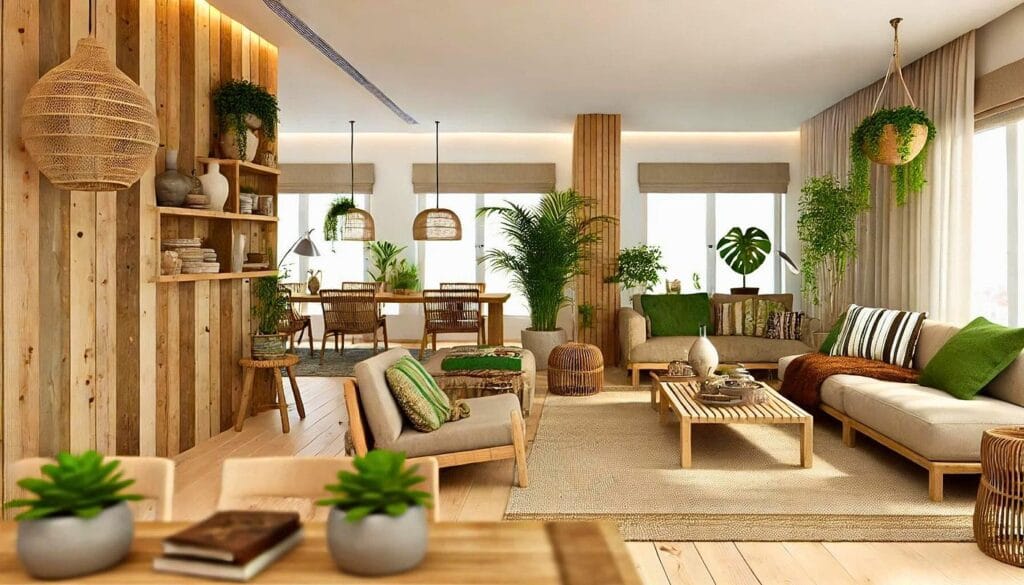
This article segment on incorporating sustainable materials focuses on the importance, types, and practical ways to integrate these materials into interior design, providing a distinct perspective without overlapping with other sections. “`html
Curate Personalized Decor for Unique Expression
In today’s fast-paced world, where mass production often overshadows individuality, personalized decor has emerged as a powerful way to express personal style and character. Curating a space that reflects your identity is not just about aesthetics; it’s about creating an oasis that feels distinctly ‘you’. This process involves the careful selection of elements that resonate with your personal experiences, interests, and aesthetic preferences, making your environment a true extension of yourself.
The Importance of Personalization in Home Decor
Personalization in home decor goes beyond merely selecting colors or furniture; it’s about infusing your living space with memories and sentiments. It allows you to craft a narrative that is entirely unique, which can make a significant impact on your emotional well-being.
- Emotional Connection: Personalized decor fosters a stronger emotional bond with your living space, as the items within it tell your story and reflect your journey.
- Distinctive Style: Curating decor that resonates with your personality provides a sense of uniqueness that mass-produced items cannot offer.
- Encourages Creativity: The process of selecting and arranging personalized items encourages creativity, leading to an invigorating atmosphere that can inspire you daily.
Finding Your Creative Voice through Decor
To curate personalized decor effectively, begin by identifying what resonates with you. This can involve considering your hobbies, travel experiences, or even your favorite color palettes. Here are some ideas to explore:
- Art and Artwork: Incorporate pieces that speak to you personally. This can be anything from family portraits, favorite quotes, to art from local artists that you admire. Consider creating a gallery wall that showcases a mix of styles and mediums for dynamic expression.
- Travel Keepsakes: Display mementos from your travels, such as shells from a beach vacation, a woven basket from a market in South America, or artwork from local artisans. These pieces can serve as conversation starters and bring back fond memories.
- Customized Furnishings: Opt for furniture that can be custom-designed or reupholstered to align with your style and vision, such as a one-of-a-kind coffee table that becomes the focal point of your room.
Tech-Infused Personalization
Incorporating technology can also enhance personalization in your decor. Smart devices allow you to customize lighting, music, and even artwork on digital displays. Consider:
- Smart Lighting Systems: Create moods with adjustable colors and intensities to complement your decor and activities.
- Digital Picture Frames: Display a rotating collection of cherished memories to keep your decor fresh and inspiring.
Sustainable Personalization
In the quest for personalized decor, consider embracing sustainability. Selecting items that are eco-friendly not only reflects personal style but also promotes responsible consumption. Look for:
- Upcycled Materials: Furniture or decor created from reclaimed wood or repurposed materials not only reduces waste but also tells a unique story.
- Handcrafted Goods: Supporting local artisans can help ensure that your decor is unique and often crafted with sustainable practices in mind.
Making it All Come Together
The ultimate goal of curating personalized decor is to create a curated space that feels harmonious and inviting. Take the time to step back and assess your choices regularly. Arrange your items in ways that inspire joy and comfort. Consider mixing various textures and finishes to achieve a layered look that reflects the eclectic nature of your personality.
For more ideas and inspirations, consider exploring resources like Apartment Therapy, which offers a treasure trove of tips on creating a personalized living environment tailored to individual styles.
In conclusion, embracing personalized decor not only enhances your home’s aesthetic appeal but also serves as a powerful statement of who you are. By thoughtfully curating elements that resonate with you, you’re not just decorating a space—you’re creating a sanctuary that inspires, comforts, and expresses your unique identity.
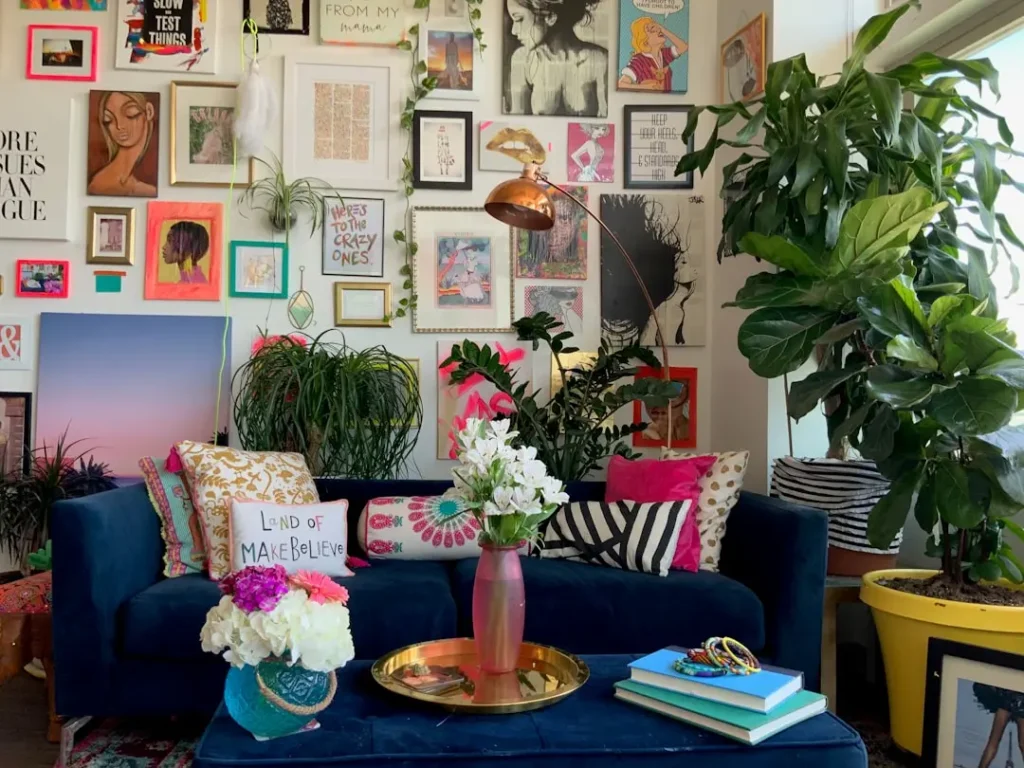
This article emphasizes the significance of biophilic design, functional furnishings, sustainable materials, and personalized decor in creating stylish and meaningful living spaces. Biophilic design invites nature indoors through elements like vertical gardens, natural textures, and earthy colors, fostering a sense of calm. Functional furnishings maximize space by serving dual purposes and incorporating smart storage solutions, while sustainable materials promote eco-friendliness through choices like reclaimed wood and low-VOC paints.
To infuse your home with uniqueness, curate personalized decor that reflects your interests and memories, using items such as travel keepsakes and custom furnishings. Incorporate technology for added personalization and consider using sustainable products, like upcycled materials and handcrafted goods, to enhance both aesthetic and ecological responsibility. By combining these strategies, you can create an inviting, reflective, and sustainable home.


